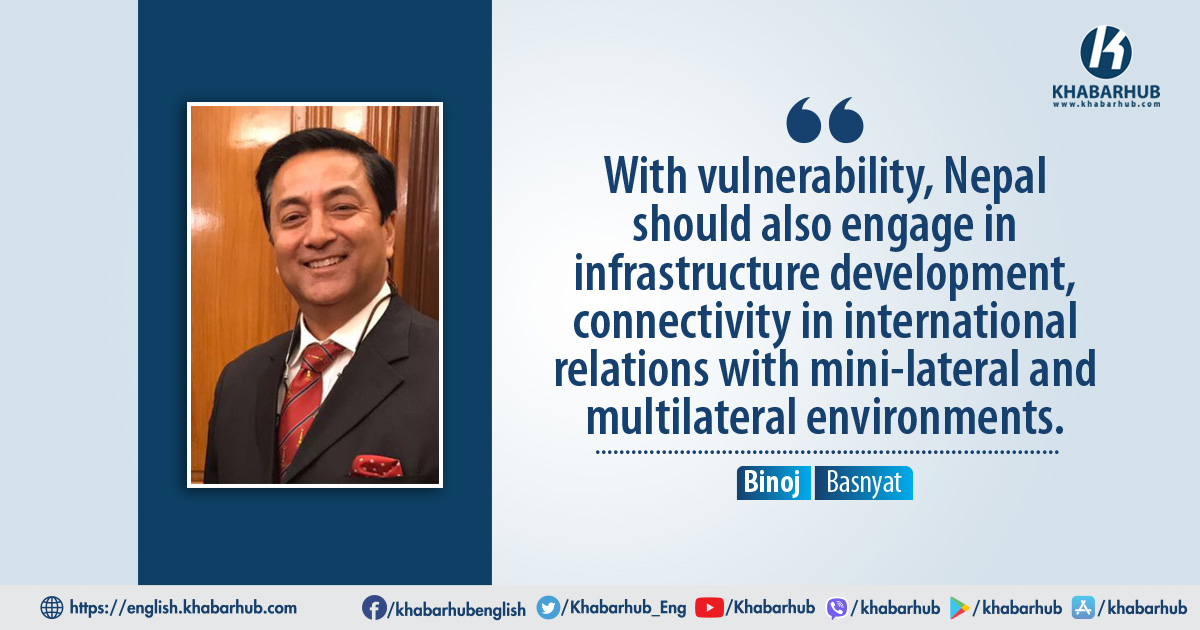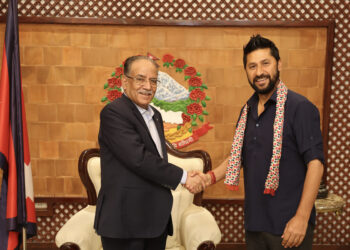Just a month after India and the US concluded the 18th edition of their joint military exercise ‘Yudh Abhyas’ in the eastern Himalayas, held in Auli, Uttarakhand from November 16th to December 2nd, 2022, another clash occurred between Chinese and Indian forces in Tawang, Arunachal Pradesh, in the western Himalayas on December 9th, 2022.
This event once again underscores the significant strategic and geostrategic consequences for prominent world powers and the South Asian region.
It reiterates Beijing and New Delhi’s appeals and claims regarding borders, as well as the diplomatic stance of smaller nations on such occurrences, which steer long-term political, economic collaboration, and political-security cooperation.
The Himalayan region, covering a disputed border of 3,379 kilometers (2,100 miles) between China and India, constitutes the largest disputed border in the world.
China controls 38,000 sq km of territory that New Delhi also claims in the west, while to the east, India holds 90,000 sq km that Beijing claims as its own.
However, the far western Himalayan region bordering Afghanistan and Pakistan, as well as the far eastern Himalayan region with Myanmar, remain relatively silent but not peaceful.
Power competition persists in the far west with China-Iran-Russia and in the eastern Himalayas with China-India spheres of influence.
The central sub-region bordering Bhutan and Nepal also experiences disputes, though they are not publicly acknowledged.
Interestingly, while political tensions simmer in Sino-Indo relations, economic ties have transcended, with China becoming India’s top trading partner in FY2024 with USD 118.4 billion in two-way commerce, according to the Global Trade Research Initiative.
In 2015, both were locked in confrontation in the Burtse area of the Depsang plains of Ladakh, where Indian troops destroyed a Chinese surveillance tower.
India’s exports to China rose by 8.7 percent to USD 16.67 billion, while imports increased by 3.24 percent to USD 101.7 billion.
Conversely, exports to the US dipped slightly by 1.32 percent to USD 77.5 billion, and imports decreased by about 20 percent to USD 40.8 billion, whereas Washington was the top trading partner during 2022-23.
In December 2022, the US Embassy in New Delhi tweeted that the joint military exercise reinforces commitment to the Indo-Pacific Region, improves interoperability, and takes the US-India partnership to new heights.
The Indian Army also mentioned the synergy between both armies.
Yudh Abhyas is conducted annually with the aim of exchanging best practices, tactics, techniques, and procedures between the armies.
The October 2021 exercise was conducted at Joint Base Elmendorf Richardson, Alaska.
South Asia, with almost two billion people, emerging powers, important shipping routes, and sensitive autonomous regions, is in a geopolitically imperative position in both maritime and continental realms.
It has expanding economic-political-security strategic paradigms, leading the region into the Indo-Pacific as a sub-region of disputation flanked by small and big powers.
The rivalry between Asia’s biggest powers, China and India, reveals itself in many spheres, despite both being rising powers, nuclear-armed, with large populations and political ambitions as global players.
New Normal in the Himalayas
End of the colonial period in South Asia in the mid-1940s, the annexation of Tibet in 1950 by China, India and Pakistan’s long-running disputes over Jammu and Kashmir, and cross-border terrorism with a number of wars, ongoing conflicts, and military standoffs.
The 1962 war between China and India, in addition to the aspirations of China and India in shaping the imminent geostrategic environment, has been the basis for border disputes that could garner attention for domestic nationalist politics and external trepidations.
The mutually acceptable 2003 Agreement on the political parameters guiding principles for the settlement of India-China Boundary questions was signed on 11 April 2005 after five meetings of the Special Representatives, which were initiated in 1981.
Bhutan stresses that it was neither a party nor was consulted before signing, though the boundary talks began in 1984 with an agreement reached in 1988 and 1998 to discourage the use of force and encourage adherence to peaceful means.
Border incidents resurfaced in 2013, such as the Depsang incursion or Daulat Beg Oldi incident near the Line of Actual Control (LAC).
The 2014 standoff in the LAC, later withdrawn to pre-September positions after three weeks, even while President Xi Jingping was on a State visit to India, signed 12 bilateral agreements.
The year 2014 was declared as the Year of China-India Friendly Exchanges, issuing a Joint Statement on Building an Even Closer Partnership for Development.
In 2015, both were locked in confrontation in the Burtse area of the Depsang plains of Ladakh, where Indian troops destroyed a Chinese surveillance tower.
Though skirmishes were evident, four occurrences of strategic significance were evident that have plunged the Sino-Indian relationship.
In June 2017, a 73-day Doklam standoff of territory claimed by both Bhutan, an Indian ally, and China ended in August with the commitment of 1949 and replaced the 2007 “New Friendship Treaty” between Bhutan and India.
The 1959 Tibetan uprising and the 14th Dalai Lama’s arrival in India inscribe the significance of the Bhutan-China border. Donglong, Doklam, is an area disputed between Bhutan and China located near the tri-junction with India.
Bhutan’s border with Tibet has never been officially recognized nor demarcated. Bhutan withdrew its representative from Lhasa with the 17-point agreement between the Tibetan Government and the central government of the People’s Republic of China.
The new normal is manifested with ‘No War’ and ‘No Peace,’ stressing the ‘Five Fingers of Tibet,’ attributed to Mao Zedong in his 1940 speech, as relevant to Chinese 21st-century foreign policy.
China claims Doklam based on the 1890 “convention of Calcutta between Britain and China with acceptance from former Indian Prime Minister (PM) Jawaharlal Nehru and showing large parts of Bhutanese territory as part of China in the maps of 1958.
Bhutan stresses that it was neither a party nor was consulted before signing, though the boundary talks began in 1984 with an agreement reached in 1988 and 1998 to discourage the use of force and encourage adherence to peaceful means.
Xi Jingping and PM Modi reiterated on the sidelines that having a good relationship was in the interest of both nations with a ‘forward-looking’ approach and closer communication between defense and security personnel being a necessity during the 9th Brazil-Russia-India-China-South Africa (BRICS) summit in September 2017.
Second, the eastern Ladakh border standoff erupted in May 2020 in the Pangong Lake area followed by a clash in the Galwan Valley in June 2020.
In December 2022, the Tawang Sector in northeastern Arunachal Pradesh on the Line of Actual Control witnessed another clash between the Chinese and the Indian military, evidence of a serious military conflict between the two sides after four and a half decades.
Lastly, a ‘new’ map was brought to light by China in August 2023 claiming northeastern Arunachal Pradesh as well as the disputed Aksai Chin Plateau, which was dismissed by Indian Foreign Minister Subrahmanyam Jaishankar.
Nepal has urged China to use Nepal’s official map, in addition to revising the map that places Lipulekh, Kalapani, and Limpiyadhura as part of Indian territory.
The decision to print a new NRS 100 currency note with a map showing the territories of Lipulekh, Limpiyadhura, and Kalapani comes barely a few months after ruling Maoist Centre Chairman Pushpa Kamal Dahal forged a leftist alliance with the Communist Party of Nepal (United Marxist Leninist), along with a few other fringe parties, in the federal parliament.
South Asia has two strategic gateways, through the land, maritime, or both. Maldives and Sri Lanka are in the maritime region, while Afghanistan, Bhutan, Nepal, Bangladesh, Pakistan, and Myanmar are in the continental region, and Bangladesh, Pakistan, and Myanmar have both maritime and land routes. Geostrategic measures involve bilateral, trilateral, quadrilateral, multilateral, and global initiatives.
India’s Foreign Minister Jaishankar expressed dissatisfaction, labeling Nepal’s move as unilateral.
He said, “Our position is clear, even if the map changes, the reality on the ground does not change.”
The new normal is manifested with ‘No War’ and ‘No Peace,’ stressing the ‘Five Fingers of Tibet,’ attributed to Mao Zedong in his 1940 speech, as relevant to Chinese 21st-century foreign policy.
The founding chairman of the Chinese Communist Party, Mao, termed Bhutan and Nepal as China’s tributary states on November 15, 1939.
Tibet is considered China’s right-hand palm, with five fingers on its periphery: Ladakh, Nepal, Sikkim, Bhutan, and the North-East Frontier Agency or Arunachal Pradesh.
Bhutan, Nepal, and Sikkim were claimed as suzerainty and asserted by the Chinese amban in Tibet in 1908, who wrote to the Nepalese authorities that Nepal and Tibet, “being united like brothers under the auspices of China, should work in harmony for mutual good,” in the face of British opposition.
China’s Strategic Opening Out
From 1950 to 1959 to 2013, a series of strategic proceedings occurred, ranging from annexation to attempts by the Government of Tibet to gain international recognition, efforts to modernize the military, military conflicts in the Chamdo area of western Kham, the Seventeen Point Agreement by the government of Tibet under Chinese pressure, to the Tibet uprising and the announcement of the Belt and Road Initiative.
These demonstrate political aspirations to the south, west, and along the Himalayas, especially in Afghanistan, Bangladesh, Cambodia, Kazakhstan, Kyrgyzstan, Laos, Maldives, Mongolia, Myanmar, Nepal, Pakistan, Sri Lanka, and Tajikistan.
With the foundation of the CCP and the 1978 economic reform, along with accessible geography, China has managed to transform into a new economic, military, and political power.
Landlocked, sea-locked, and all countries in South Asia have choices with vulnerability and invincibility, while the two Asian giants’ regional strategic interests are politically competing, economically cooperating, and militarily confronting in the Himalayas.
A joint research report by a five-country think tank team, including the Chongyang Institute for Financial Studies at Renmin University of China, released that China’s Gross Domestic Product (GDP) is estimated to surpass that of the US, with the country becoming the world’s largest economy by around 2035.
With the growth of its economy, China has emerged as a global actor.
South Asia has two strategic gateways, through the land, maritime, or both. Maldives and Sri Lanka are in the maritime region, while Afghanistan, Bhutan, Nepal, Bangladesh, Pakistan, and Myanmar are in the continental region, and Bangladesh, Pakistan, and Myanmar have both maritime and land routes. Geostrategic measures involve bilateral, trilateral, quadrilateral, multilateral, and global initiatives.
China provides economic assistance as a key creditor and in the form of grants. According to the World Bank’s international debt report, developing countries owe about USD 180 billion.
Chinese loans to Pakistan rose from USD 7.6 billion in 2016 to USD 26.5 billion in 2022, accounting for 72 percent of the total external debt and 57 percent of debt repayment revenue.
Sri Lanka defaulted on its foreign loans, triggering massive turmoil, and bankruptcy rose from USD 4.6 billion in 2016 to USD 8.8 billion in 2022, accounting for 57 percent of the total external debt and 54 percent of debt repayment revenue.
Bangladesh’s loan is USD 6 billion, Maldives’ is USD 1.2 billion, and Nepal’s is USD 0.26 billion.
Though small in figure, it accounts for 24 percent, 68 percent, and 27 percent of foreign liabilities, respectively.
Nepal’s PM Pushpa Kamal Dahal (Prachanda) has said that the process has been initiated to ask China to convert the Pokhara International Airport loan into a grant to ease the financial burden of the USD 215 million loan, out of the USD 305 million with 2-3 percent interest from the Export-Import Bank, with repayment in 25 years, while other international monetary institutions provide loans with interest rates ranging from 0.25-0.75 percent.
The Asian Development Bank and the 12-member Organization of the Petroleum Exporting Countries (OPEC) for International Development contributed USD 37 million and USD 11 million, respectively.
At the same time, the small states in South Asia should strengthen state institutions, assemble a strong civil society that is besieged to contend with implication, create experts to match implications of geopolitical activism to policy, and augment local awareness of the extent of ‘privileged detained’ political status.
An example is the arrival of Chinese experts in Kathmandu for a feasibility study of the China-Nepal cross-border railway in December 2022.
Conclusion
Landlocked, sea-locked, and all countries in South Asia have choices with vulnerability and invincibility, while the two Asian giants’ regional strategic interests are politically competing, economically cooperating, and militarily confronting in the Himalayas.
Deepening cooperation between India and the West, particularly the US, in addition to the US-led West with the rest, has made China feel on edge, and the risk of new outbreaks of fighting perseveres.
China’s economic strength, political conviction, and military engagement have expanded in India’s neighborhood with an all-weather relationship with Pakistan and regime-centered relationships with other South Asians, externally balancing India.
Xi’s continuation for more years or decades after the removal of the two-term limit on the presidency, endorsed by the annual sitting of the National People’s Congress in 2018, and the likelihood of Modi 3.0 with the elections taking place, will present a sterner test than the last decade, with heightened nationalism and geopolitical tensions.
Both Beijing and New Delhi appeal to Eastern governments of their preference in South Asia.
A political success will, in fact, serve to divide and fragment South Asian nations domestically.
This will function for the goodwill of the favoring power rather than addressing their strategic necessities and falling into the strategic trap.
Nepal must build on with the traditional and customary practices, analyzing the domestic implication with India and other South Asian neighbors and at the same time secure opportunities with China and other donor nations, particularly the US-led West, in its strides to addressing the people’s aspirations and national obligations with no compromise on national interest or falling into the geopolitical long game.
Together with resuming dialogue and reopening communications between Xi and Modi and through existing mechanisms like the 1996 “mutual and Equal security” to reaffirm de-escalations in the Himalayan borders.
It is arduous when Beijing depicts the border situation as normal and New Delhi apprehensive.
At the same time, the small states in South Asia should strengthen state institutions, assemble a strong civil society that is besieged to contend with implication, create experts to match implications of geopolitical activism to policy, and augment local awareness of the extent of ‘privileged detained’ political status.
Nepal, as a vulnerable country facing special challenges as a buffer between the opening and the potency of big power politicking on one side and, on the other, domestic capacity to manage and palliate political-economic-diplomatic-security risks.
With vulnerability, Nepal should also engage in infrastructure development, connectivity in international relations with minilateral and multilateral environments.
Bilateral undertakings will assist neutrality and will avoid being part of the upcoming global bipolarity between China, a communist nation, and the US, a democracy, and the risks that rivalry can pose.
This will navigate from plunging into the strategic trap in addition to strategic outreach and policy recommendations that manifest domestic political and economic reality as big powers’ competition prevails in South Asia, questioning national credibility.
Nepal must build on with the traditional and customary practices, analyzing the domestic implication with India and other South Asian neighbors and at the same time secure opportunities with China and other donor nations, particularly the US-led West, in its strides to addressing the people’s aspirations and national obligations with no compromise on national interest or falling into the geopolitical long game.
(The author is a Strategic Analyst, Major General (Retd) of the Nepali Army, and is associated with Rangsit University, Thailand)









Comment